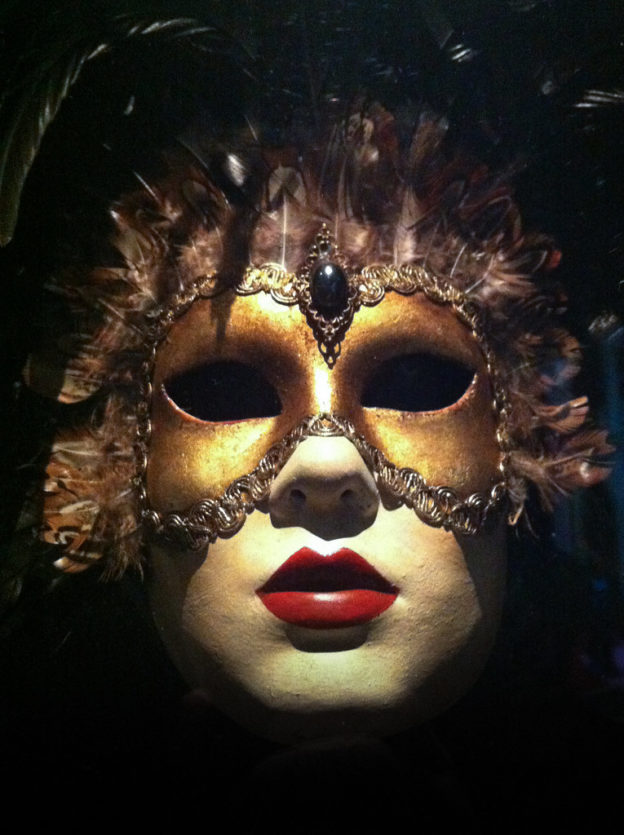Stanley Kubrick’s last film, “Eyes Wide Shut,” turned 20. I had reviewed it for a Canadian newspaper, on August 9, 1999, and found it not only pretentious and overrated, but quite a snooze.
This flick is the last in a series of stylized personal projects for which the director became known. Given the mystique Kubrick acquired or cultivated, this posthumous flop is unlikely to damage the legend.
For all the film’s textured detail, its yarn is threadbare and its subtext replete with clumsy symbolism. The screenplay consists of labored, repetitive and truncated dialogue, where every exchange involves protracted, pregnant stares and furrowed brows. “I am a doctor,” is Tom Cruise’s stock-in-trade phrase. An obscure, campy, hotel desk clerk delivers the only sterling performance. This is cold comfort considering the viewer is stuck with over two hours of Tom Cruise’s halfhearted libidinous quests.
“Eyes” is really a conventional morality play during which Cruise prowls the streets of New York in his seldom-removed undertaker’s overcoat, in search of relief for his sexual jealousy. Cruise’s jealousy is aroused by a fantasy his wife—played by then real-life wife Nicole Kidman—relays in a moment of spite, and involves her sexual desire for a naval officer she glimpsed while on holiday with their family. So strong was her passion, she tells Tom, that she would have abandoned all for this stranger.
The confession follows a society party the couple attends in which they both flirt unabashedly with others. Again, the sum total of the dialogue here consists in back-slapping guffaw-inducing genuflection to doctorness. We are treated to a grating peek at Kubrick’s view of the professional pecking order, a view which is reinforced when Cruise makes one of his house calls to a patient whose father has just died. The woman, body writhing like that of a snake in coitus—is this method acting?—throws herself at Cruise. Sex and death commingle in one of the many larded, symbolic moments in the film. The woman’s fiancé, the geek math professor, is depicted as a lesser mortal than the handsome doctor.
This, obviously, is not about the professional food chain. But neither is it about what Len Blum of the National Post described in effervescent, stream-of-consciousness prose: “Attraction. Flirtation. Seduction. Exploitation. Intimacy. Fantasy. Hurt. Revenge.” Because, if it’s erotica you seek, then the movie is as sexy as cold mutton.
Back at the party, Tom is besieged by two randy models that want him. These females also can’t stop writhing like rattlesnakes, their attempts at sexy more phero-moronic than pheromone inspired. Nicole, in the meantime, is doing her own hormonal hop with a Dracula look alike. Yes, the film is full of frozen, flat characters. As they coil around one another, intoxicated, Dracula applies his amorous solvent: “The charm of marriage,” he quips, “is that it makes a life of deception absolutely necessary.” At this point, Kubrick is defanged: He becomes a plagiarist who underestimates his audience, as Dracula fails to credit Oscar Wilde for the witty epigram.
No bash would be complete without the doctor coming to the rescue. Upstairs, draped over a chair ever so decoratively, languishes a victim of a drug overdose. She is nude and post coital. Tom runs ears, eyes and pulse checks and then proceeds to sit by the girl’s side, sans coffee or an intravenous something, until she is declared saved, presumably by his mere presence. The girl pulls through never to forget the good doctor and destined to return the favor in the next hour or two. She, the Madonna-whore, is another lumpen symbol in this film.
Tom’s journey to sexual and emotional maturation leads him to rekindle an acquaintance with a not-quite-doctor jazz musician. The medical school dropout tells Tom he is on the way to a regular gig where, when he peeks through his blindfold, his peripheral vision is filled with gorgeous, masked, naked females. Tom decides to gate crash that orgy. Why Tom becomes imperiled at the orgy is unclear. Maybe he annoyed a patron by doing his Überdoctor routine. But to the rescue comes a stranger with familiar protrusions. At this point it must be clear to all that this woman, the Madonna-whore, is toast.
In passing boredom, I noted that the mask of one of the orgy attendants was a Guernica-like Picasso creation. No doubt, the orgy could have done with some Guernica-like chaos. (Guernica, painted by Picasso, powerfully depicts the bombing of that Spanish town, in 1937, by the Germans.) The orgy, instead, is a fashion shoot, engorged with sexless, perfect bodies, locked in aesthetically pleasing, unerotic positions.
Kubrick’s morality play reaches an epiphany when, after an unconsummated visit to a friendly prostitute, Tom learns she has been diagnosed as HIV positive. From across the girl’s seedy abode, a hood in a trench coat stares Tom down. This is a messenger from the orgy society, and the message? The penumbra of sex can kill.
A far better cult movie by Kubrick was “A Clockwork Orange.” In it, the delinquent Alex, inspired by evil and infused with a love for great classical music, does very bad things. The modest moral I took away from Clockwork was that someone who loves Beethoven’s Ninth so dearly could not be all bad. Certainly, listening to “Ode to Joy” was a lot more pleasurable than to “Three Blind Mice,” the minimalist score from “Eyes Shut Wide.”
©2019 ILANA MERCER
The Unz Review, Quarterly Review,
Townhall.com, WND.COM
September 4
* Image courtesy of Quarterly Review.
CATEGORIES: Film, Morality, Popular Culture, Sex & Sexuality

 print
print